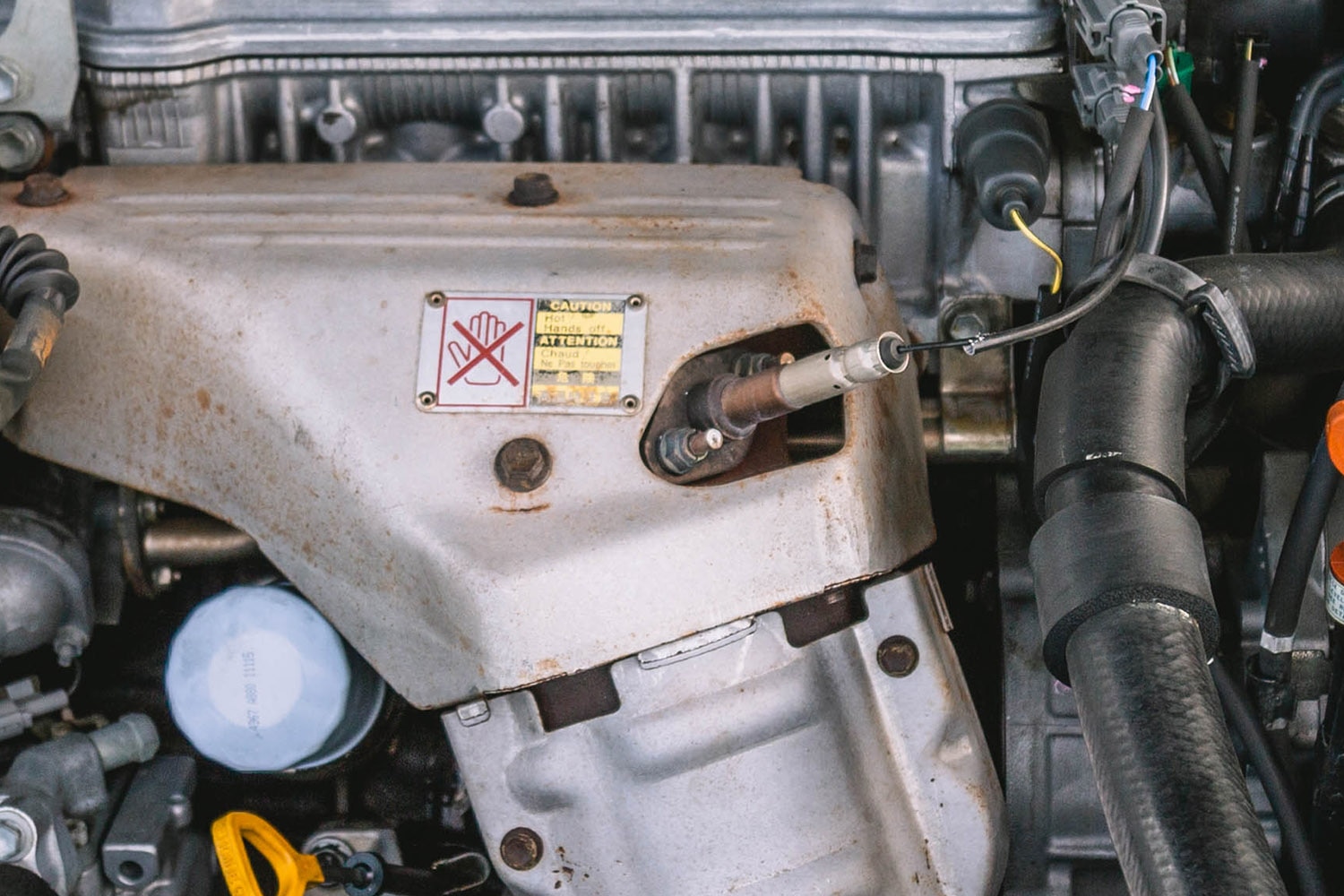What to Know About Oxygen Sensors in Cars and How to Replace Them
These sensors help keep your engine running smoothly and cleanly.
 Manuel Carrillo III | Capital One
Manuel Carrillo III | Capital One
QuickTakes:
Oxygen sensors — also called O2 sensors —are a small but important part of your internal-combustion-engine (ICE) vehicle's drivetrain. Often found in pairs, these parts pull double duty in making sure an engine produces a reasonable amount of power while respecting emissions regulations.
Here's how O2 sensors work, why they're important, and how to know when it's time to replace them.
O2 Sensors Are Crucial for Emissions and Power
An oxygen sensor has one very basic task: to monitor the amount of oxygen in the exhaust gases that flow past it and send that information to the computer that runs the vehicle's engine.
Oxygen levels are important to an ICE vehicle. The engine makes power by combining fuel and air and then igniting that mixture to send the pistons moving. If the mixture becomes too rich (too much fuel) or too lean (too much oxygen), an automobile's power production and efficiency can be negatively affected.
By keeping track of the level of unburned oxygen in the exhaust produced by an engine's combustion cycle, an O2 sensor allows the vehicle's engine control unit to adjust the air/fuel ratio to best deal with the current driving situation. It also serves as a sentinel, keeping watch over tailpipe emissions, and can alert you to a problem with the vehicle's anti-pollution equipment.
Most modern ICE vehicles have at least two oxygen sensors, if not more: an upstream O2 sensor, which is mounted before the catalytic converter, and a downstream O2 sensor, which is mounted after the catalytic converter.
No Car Oxygen Sensor Lasts Forever
Oxygen sensors are subjected to intense heat throughout their lifespan. They can also be exposed to unburned fuel in an engine where the combustion process isn't performing the way it's designed to. Over time, these tough conditions can cause an O2 sensor to fail, typically around the 100,000-mile mark for recent designs.
How can you tell if an O2 sensor is going bad? If an upstream (mounted before the catalytic converter) O2 sensor is failing, you might experience power loss, reduced efficiency, and a rough-running engine. A dying downstream (mounted after the catalytic converter) O2 sensor doesn't often produce any symptoms that are detectable from the driver's seat, but it can trigger a check-engine light and cause you to fail an emissions test.
Replacing a Car's O2 Sensor Can Be Straightforward
In theory, it's relatively simple to replace a bad O2 sensor. They are typically connected to the vehicle's wiring harness by a single plug and are attached to the exhaust system. A specialized O2 sensor socket wrench attachment is usually needed to remove the component after it has been unplugged.
Because you'll have to reach the underside of the vehicle, a lift or a jack and jack stands will likely be required as well. The most difficult part of replacing the sensors can be gaining access to them. Upstream oxygen sensors can be stuffed into tight places that might be tough to reach with a socket and driver.
Occasionally, exposure to road salt and heat can corrode both upstream and downstream sensors and make them a challenge to break free. If you pay a professional to replace the sensor for you, the cost is generally between $350 and $400.



